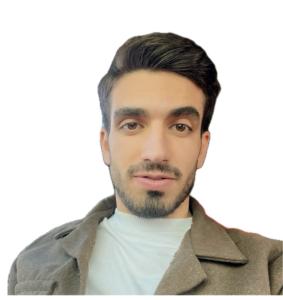Bending bearing capability of curved auxetic cores - دانشکده فنی و مهندسی
Bending bearing capability of curved auxetic cores

نوع: Type: Thesis
مقطع: Segment: masters
عنوان: Title: Bending bearing capability of curved auxetic cores
ارائه دهنده: Provider: Shahin Zahraei Omid
اساتید راهنما: Supervisors: Dr. Mahdi Shaaban
اساتید مشاور: Advisory Professors: Dr. Hashem Mazaheri
اساتید ممتحن یا داور: Examining professors or referees: Dr. Ali Alavinia, Dr. Rahman Seifi
زمان و تاریخ ارائه: Time and date of presentation: 2025
مکان ارائه: Place of presentation: سالن کنفرانس دانشکده مهندسی
چکیده: Abstract: Mechanical metamaterials are a class of advanced materials whose macroscopic properties, such as flexibility and mechanical strength, are derived from their internal microscale architectures. These materials are primarily composed of repeating three-dimensional unit cells and, with the advancement of 3D printing technology, have become a highly challenging and widely applied topic in engineering. In this study, the bending load-bearing capacity of curved auxetic cores was investigated. In the first step, the mechanical properties of PLA+ were determined based on tensile test results and the corresponding stress–strain curves. Subsequently, three geometries—anti-tetra chiral, tetra chiral, and hexachiral were designed in both flat and curved configurations along the X and Z directions, fabricated using a 3D printer, and subjected to three-point bending tests. The structural performance was then experimentally compared in terms of bending stiffness and specific energy absorption. Based on the bending tests, the bending stiffness and specific energy absorption of the samples were calculated experimentally. Finally, finite element modeling was performed, and the simulation results showed a 5% to 10% deviation from the experimental data. Based on the experimental test results, the flat and curved samples of the anti-tetra chiral geometry along the X direction exhibited an 18% difference in bending stiffness and a 45% difference in specific energy absorption, while in the Z direction, the differences were 48% and 57%, respectively. For the tetra chiral geometry, the differences along the X direction were 25% in bending stiffness and 56% in specific energy absorption, whereas in the Z direction, the differences were 15% and 12%, respectively. In the hexachiral geometry, the bending stiffness and specific energy absorption showed no significant difference along the X direction, while in the Z direction, differences of 32% and 50% were observed, respectively. Subsequently, to enhance the mechanical properties and achieve optimized samples, an experimental design based on the Optimal Custom approach was conducted. In this two-objective design, four geometric parameters along with a symbolic parameter defining the coordinates of the new sample geometries were considered as the main factors. Based on the conducted experimental design, 29 samples were proposed for each geometry and analyzed using finite element software. The optimal samples for each geometry were then designed and fabricated, subsequently subjected to bending tests, and modeled in Abaqus. Based on the analysis of the experimental design conducted using Design-Expert software, in the anti-tetra chiral geometry, the variables of cell-to-cell distance, sample curvature radius, and loading direction had a greater influence compared to other variables. In the tetra chiral geometry, variables such as thickness, curvature radius, and cell-to-cell distance were more influential, while in the hexachiral geometry, thickness, core radius, and cell-to-cell distance exhibited the highest impact relative
